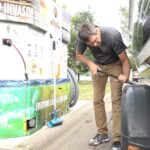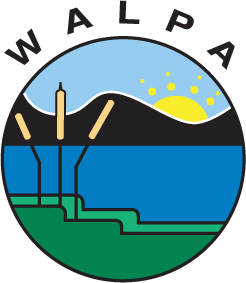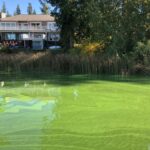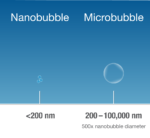WALPA 2021 action plan
by Rob Zisette, President
First, thank you Sally and the rest of the WALPA board for successfully guiding us through 2020 with all the pandemic unknowns and limitations. Sally’s energy and guidance is truly inspirational and sets a high bar for 2021. Second, I am excited to welcome our new directors Wafa Tafesh, Shannon Brattebo, Matt Colston, and Paula Cracknell to the WALPA board. I am also excited about our new President-elect Jen Oden, our new Treasurer Beka Stiling, and the directors who extended their term: Josh Wozniak and Will Hobbs. The WALPA board met on December 1 and plans to continue having virtual meetings on the first Tuesday of each month from noon to 1 pm. Members are welcome to join us, so please email me if you want to attend and I will send you the link.
Aquatechnex works to curb harmful algae blooms (HABs) in western lakes
WATERLINE SPONSORED CONTENT
Aquatechnex is known in Washington State primarily for our expertise in managing invasive aquatic weeds such as Eurasian milfoil. A large part of our business, however, is outside Washington and we are often more focused on managing and mitigating Harmful Algae Blooms (HABs).
WALPA annual conference a virtual success
by Sally Abella, immediate Past President, WALPA
 WALPA’s first-ever online conference was held October 14th and 15th with an amazing total of 173 registrants for the free offering! The University of Washington-Tacoma Information Technology Department provided a team headed by Mark DePaul to handle the technical portions of the program, which was broadcast on the UW UTube channel, with live participation by session chairs, panelists, and some presenters occurring via Zoom. Questions were fielded through email to the WALPA address or live chat on UTube, with the presenters available to reply on Zoom.
WALPA’s first-ever online conference was held October 14th and 15th with an amazing total of 173 registrants for the free offering! The University of Washington-Tacoma Information Technology Department provided a team headed by Mark DePaul to handle the technical portions of the program, which was broadcast on the UW UTube channel, with live participation by session chairs, panelists, and some presenters occurring via Zoom. Questions were fielded through email to the WALPA address or live chat on UTube, with the presenters available to reply on Zoom.
Small bubbles, big impact: Nanobubbles for effective deep-water oxygenation and algae control
by Christian Ference, Application Engineer
The increasing prevalence of harmful algae blooms (HABs) has spurred the need for new waterbody management techniques and sustainable treatment technologies. Traditionally, aquatic management companies and source water managers have relied on two methods for managing algae blooms: chemicals (like algaecides and alum) and diffused aeration. Chemical algae treatment can be temporarily effective, but the routine application of chemistry has raised concerns about bioaccumulation and impacts on non-target organisms. Further, diffused aeration is a method for waterbody mixing and is inefficient at increasing dissolved oxygen levels, especially near the sediment where it can be most important.
CD3 technology empowers boat owners to help limit the spread of invasives
Waterline Sponsored Content
 In 2016, Dr. Edgar Rudberg and Mark Apfelbacher left the consulting field to help stop the spread of invasive species. They began CD3 as a general benefit corporation dedicated to developing technologies that prevent the spread of invasive species. As fathers, boaters, anglers, and hunters, their mission is to develop technologies that empower the public to reduce the spread of invasive species, safeguard local economies, and protect the natural environment. Dr. Rudberg employs his knowledge of behavioral psychology and Mr. Apfelbacher uses his background in landscape architecture to help communities install waterless cleaning infrastructure at boat ramps. These systems empower boaters themselves to clean, drain, and dry their boats and trailers. The results have been astounding. To date, boaters have used CD3 System tools over 100,000 times.
In 2016, Dr. Edgar Rudberg and Mark Apfelbacher left the consulting field to help stop the spread of invasive species. They began CD3 as a general benefit corporation dedicated to developing technologies that prevent the spread of invasive species. As fathers, boaters, anglers, and hunters, their mission is to develop technologies that empower the public to reduce the spread of invasive species, safeguard local economies, and protect the natural environment. Dr. Rudberg employs his knowledge of behavioral psychology and Mr. Apfelbacher uses his background in landscape architecture to help communities install waterless cleaning infrastructure at boat ramps. These systems empower boaters themselves to clean, drain, and dry their boats and trailers. The results have been astounding. To date, boaters have used CD3 System tools over 100,000 times.












